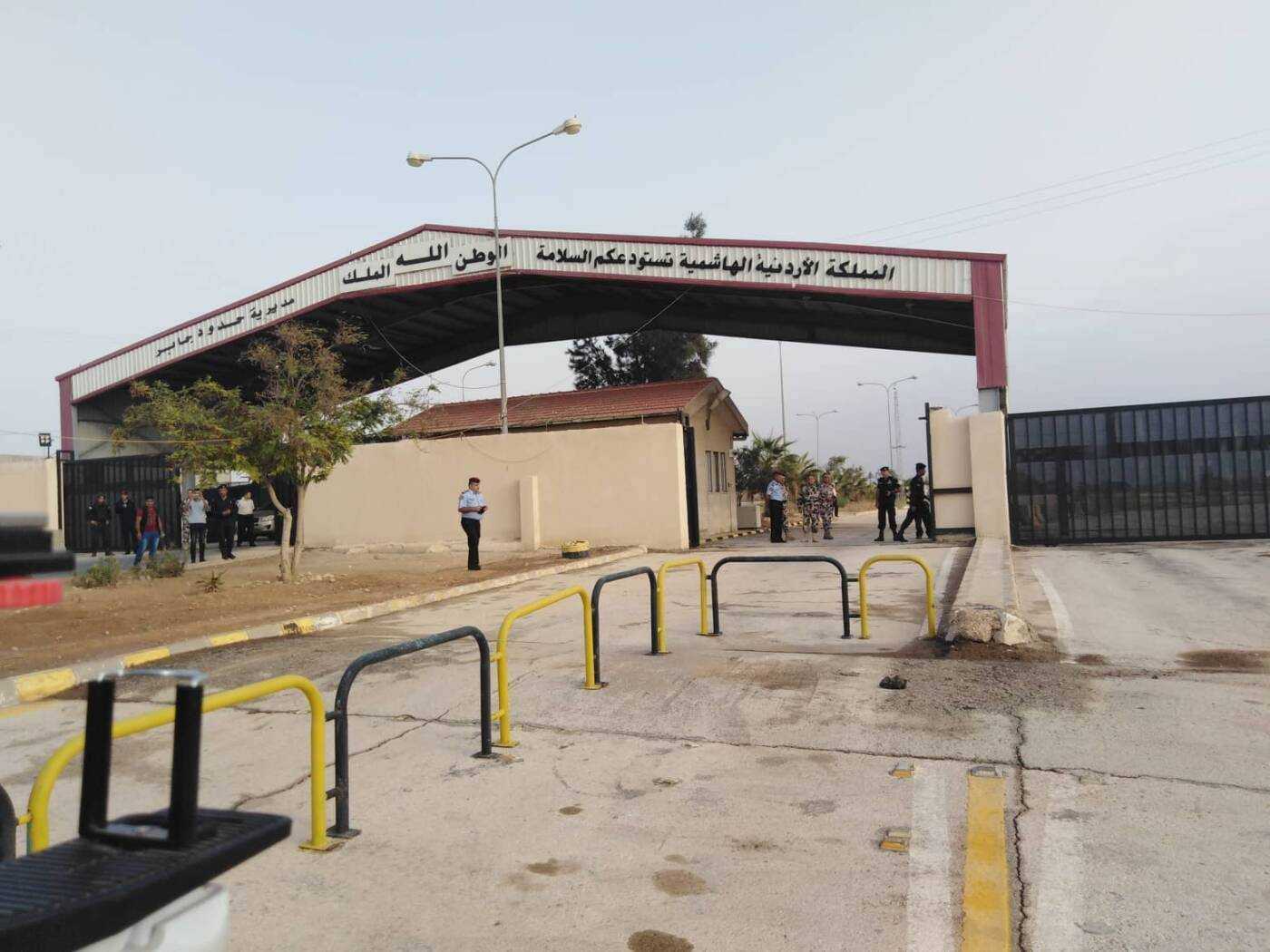Jordan reopens vital border crossing with Syria amid talk of diplomatic ‘normalization’
The Naseeb crossing on Monday. Photo courtesy of Damascus Now. […]
15 October 2018

AMMAN: Cars began trickling across Syria’s southern Naseeb border crossing with Jordan on Monday morning as the crossing partially opened for the first time in more than three years, signaling initial steps towards “normalization” between Amman and Damascus.
At least half a dozen vehicles bearing Jordanian license plates appeared to be preparing to pass through the crossing towards Syria in images broadcast on local TV and social media channels Monday morning, as Jordanian security officers checked drivers’ passports and ID documents. One passenger told privately owned Jordanian TV station Ro’ya on Monday that he was going on a “short trip” to Damascus.
The exact logistics for crossing the border, however, remain unclear.
Speaking to Syria Direct late Sunday evening, an informed Jordanian source said Monday’s opening would be “partial,” and that travellers hoping to pass through the Naseeb crossing would have to be “pre-approved.”
The source could not provide further details on the steps for attaining pre-approval, or whether travellers who planned to cross the border the following day had obtained such permission.
According to a statement released Monday morning by the state-run Jordan News Agency (Petra), Syrian citizens hoping to enter Jordan via the Naseeb crossing must obtain “prior security approval.”

Resumption of trade at the crossing would likely include “back to back transfers,” whereby Syrian and Jordanian traders would trade within a border area between the two countries rather than via direct shipments transiting through the border zone, a Western diplomatic source told Syria Direct on Monday.
An economic artery
Naseeb—known in Jordan as the Jaber crossing—has been shuttered since 2015, when rebel fighters seized the Syrian side of the border in a massive military campaign.
The crossing once served as a major economic and travel artery for Syria, Jordan and neighbouring countries. Its closure was a major economic blow for Jordan, which relied on a land route via Syria to send exports to Turkey and Europe—an industry that made hundreds of millions of dollars each month prior to the outbreak of the Syrian uprising and ensuing conflict.
Speculation about Naseeb reopening grew in July, after Syrian pro-government forces—backed by Russian airpower—retook the entirety of Syria’s southern Daraa and Quneitra provinces from rebels.
The Syrian government began repairing its side of the border crossing in mid-September, Syrian state news agency SANA reported at the time. Less than two weeks later, SANA announced that the border would reopen officially on October 10.
Jordanian Foreign Minister Ayman Safadi told reporters at a press conference in Lebanon last week that his government hoped to see the border open, but that that could only happen once both sides come to agreement fulfilling “all necessary preparations and steps.”
Jordanian government spokesperson Joumana Ghneimat announced Sunday evening that both sides had “agreed on the final necessary steps” for reopening the crossing.
Ghneimat could not be reached for comment on Monday.
The crossing on Monday, seen from Jordan. Photo by Rabbie Hamamsah.
‘One more step towards normalization’
Monday’s reopening—though seemingly limited for now—could reflect thawing relations between Amman and Damascus after years of tensions throughout Syria’s seven-year conflict, said Sam Heller, senior analyst with the International Crisis Group.
Jordan previously provided support to a number of rebel groups that fought against Syrian government forces over the course of the war, driving a diplomatic wedge between the two countries.
That could soon change, Heller told Syria Direct, even if cross-border ties resume “not necessarily on totally friendly terms.”
Resumption of traffic through Naseeb is “one more step towards normalization of relations between Jordan and the Syrian government in Damascus,” as well as “Syria’s economic and political reintegration in the region more generally,” he added.
Signs of a potential thaw in relations are not necessarily new—a delegation of dozens of Jordanian businessmen visited Damascus early last month to discuss resuming trade between the two countries, Amman-based Jordan Times reported at the time.
Meanwhile, local business owners in northern Jordan have been preparing for the reopening of Naseeb for some time.
“All of us traders are ready for the border to open today,” Thaer a-Natour, a business owner in the northern Jordanian city of Ramtha, told Syria Direct last week. “We want things to go back to how they were.”
One Syrian business owner residing in Jordan, who owns a passenger bus company that once ferried passengers from Amman to Damascus before the war, told Syria Direct on Monday that he and his employees were “waiting to see how things go” at Naseeb before renewing their cross-border route.
The business owner requested anonymity, fearing reprisals back home in Syria.
There are also signs that Syria is attempting to open up crossings with other neighboring countries in the wake of Naseeb.
Syrian Foreign Minister Walid al-Moualem told reporters in Damascus on Monday he was looking to reopen the Abu Kamal border crossing with Iraq “soon,” according to state news agency SANA.
Syria’s crossing with the Israeli-occupied Golan Heights also reopened—to UN observers—on Monday after a four-year closure due to fighting in southwestern Syria.








